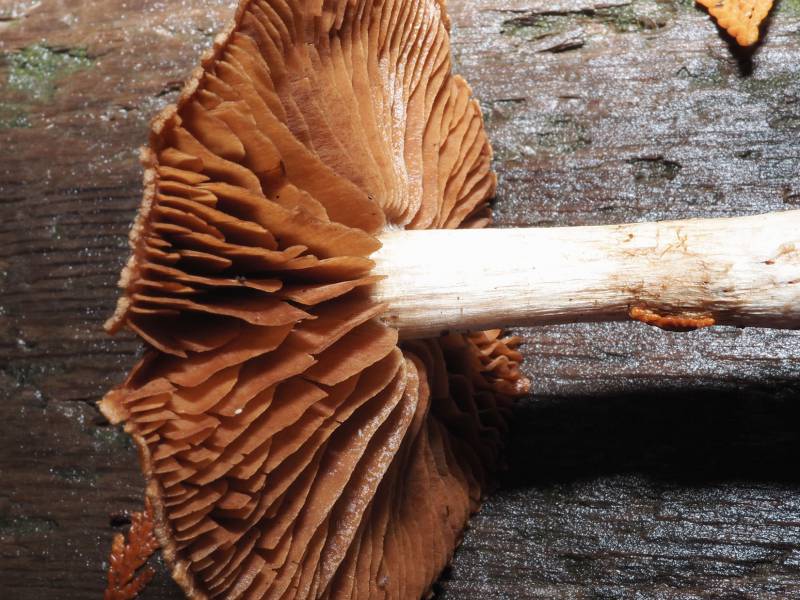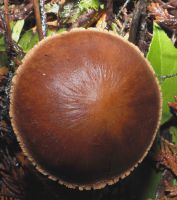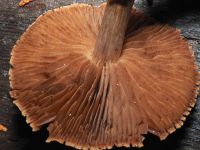Habitat: Conifer forests
Conservation Status: Not of concern
Cortinarius brunneus (subgenus Telamonia) has relatively large, fleshy fruitbodies, with dome-shaped caps that reach 8 cm (3 in.) in diameter, are watery red brown to umber in color, sometimes with bluish tones, and have a striate margin when fresh. The fills are subdistant to distant, relatively thick and wide, and dark brown, sometimes with bluish or reddish brown tints. The stipe is fleshy, equal to clavate, pale brown, sometimes with bluish tints, and darkens with age or when bruised. The veil leaves a white to brownish zone on the stipe. The flesh of the fruitbody is whitish brown to grayish brown or slightly bluish. On drying the entire fruitbody becomes grayish black. The spores are ovoid and coarsely ornamented. Cortinarius brunneus and its relatives are common in moist conifer forests of North America, Europe, and likely elsewhere in the Northern Hemisphere. At times, C. brunneus can be exceedingly abundant in PNW forests with Sitka spruce and other conifers, especially near the coast. Cortinarius glandicolor is similar, but has more slender fruitbodies and is less likely to have a distinct ring-zone on the stipe. It appears to be more widely distributed than C. brunneus, in both moist and dry conifer forests.
Sources: Trudell, Steve and Joe Ammirati. Mushrooms of the Pacific Northwest. Portland, Timber Press, Inc. 2009.
PNW Herbaria: Specimen records of Cortinarius brunneus in the Consortium of Pacific Northwest Herbaria database.
CalPhotos: Cortinarius brunneus photos.






